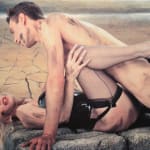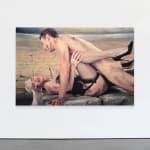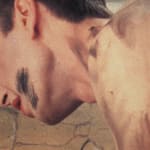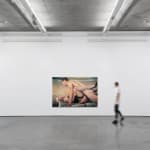Jeff Koons
-
 Courtesy of MasterClass
Courtesy of MasterClass -
Jeff Koons is widely regarded as one of the most significant and influential figures in 21st-century art.
Lives and works in New York
> DOWNLOAD CV
Throughout his immensely successful career, Koons has consistently challenged the traditional boundaries between high art and mass culture. By expanding the limits of industrial production and embracing the concept of the readymade, he has transformed the dynamics between artists and global markets.
Jeff Koons studied at the School of the Art Institute in Chicago. He obtained his B.F.A. from the Maryland Institute of Art in Baltimore in 1976 and then relocated to New York City.
From the mid-1980s, alongside such artists as Cindy Sherman and Richard Prince, Koons gained prominence as part of the Post-Pop generation. From the outset of his career, he demonstrated a penchant for working in series, exploring various themes and concepts. He pioneered the practice of appropriation, which involved replicating mundane commercial images and objects with slight alterations in size or material. His artistic style has evolved from small-scale assemblages of found objects to the creation of his now legendary monumental works.
Among artist’s most iconic works are the sculptures depicting everyday objects, including balloon animals produced in stainless steel with mirror-finish surfaces, including "Rabbit" (1986), "Balloon Dog" (1994), as well as his monumental topiary sculpture "Puppy" (1992), permanently installed at the Guggenheim Bilbao.
The work by Jeff Koons has been a subject of numerous solo exhibitions, including artists' retrospective at the San Francisco Museum of Modern Art in 1992–93 and a major retrospective organized by the Whitney Museum of American Art in 2014, which subsequently toured the Centre Pompidou in Paris and the Guggenheim Bilbao.
-
Работы
Jeff Koons
Dirty – Jeff on Top, 1991Oil inks on canvas152,4 × 228,6 cmFurther images
«Создавая эту серию, я просто размышлял о вещах, которые меня окружают. Меня интересовали простые образы — я понял, что именно они занимают людей: люди далеки от своей истории, далеки от...«Создавая эту серию, я просто размышлял о вещах, которые меня окружают. Меня интересовали простые образы — я понял, что именно они занимают людей: люди далеки от своей истории, далеки от принятия самих себя. Тогда я решил обратиться к телу — к тому истоку, где зарождаются чувства вины, стыда и отторжения».
— Джефф КунсMade in Heaven остаётся одной из самых резонансных и спорных серий в творчестве Джеффа Кунса. Этот цикл откровенных работ — живописных полотен, скульптур и инсталляций — стал визуальным манифестом его союза с Илоной Сталлер, скандально известной актрисой и политиком, выступавшей под псевдонимом Ла Чиччолина.
Используя характерную для Илoны стилистику гламурной фотографии — того же фотографа и те же декорации, — Кунс намеренно размывает границу между эротизмом в искусстве и порнографией. Его утрированно декорированные постановочные сцены служат не провокацией ради скандала, а условной точкой отсчёта для исследования границ восприятия и морали — вопроса, который обостряется в контексте уже сложившейся репутации художника и признания его институциями.










